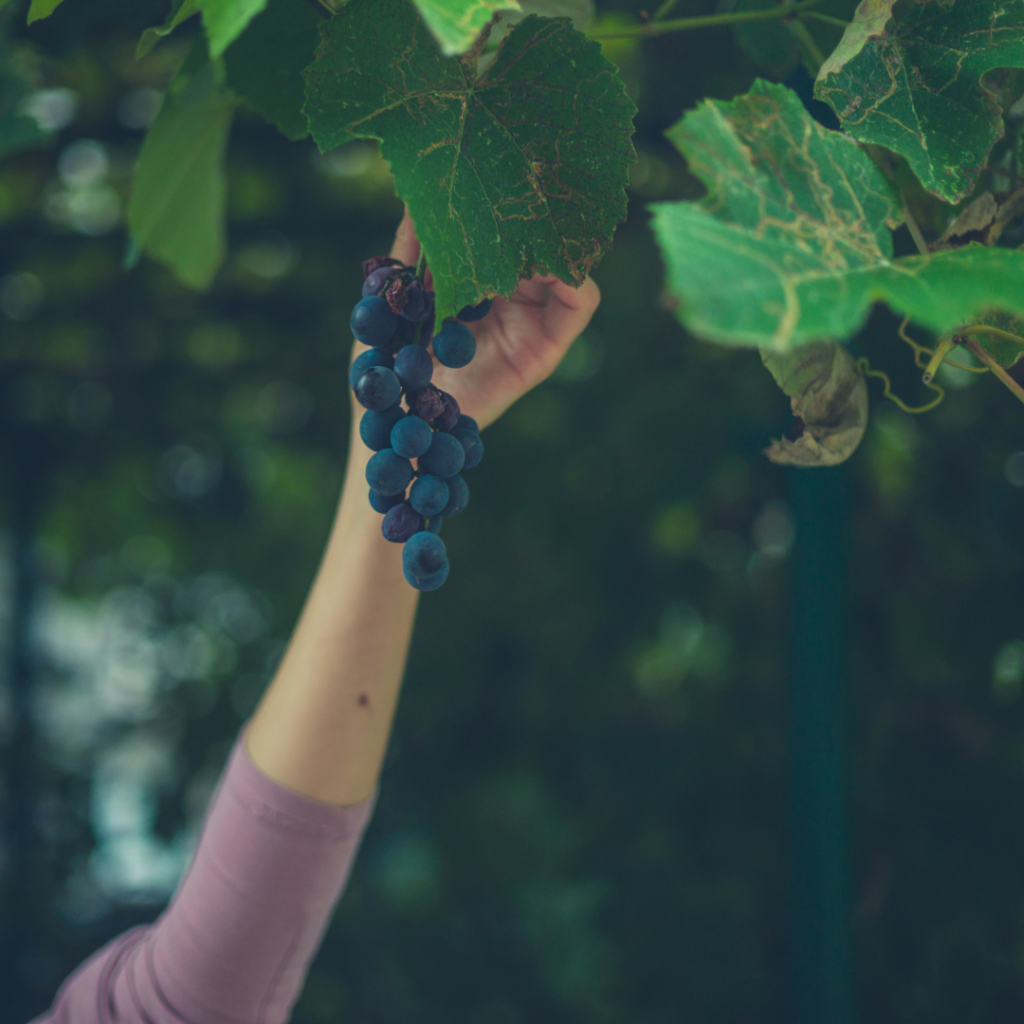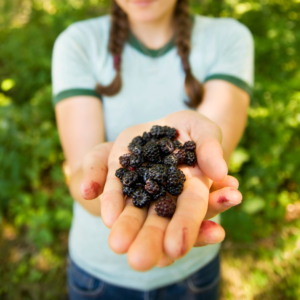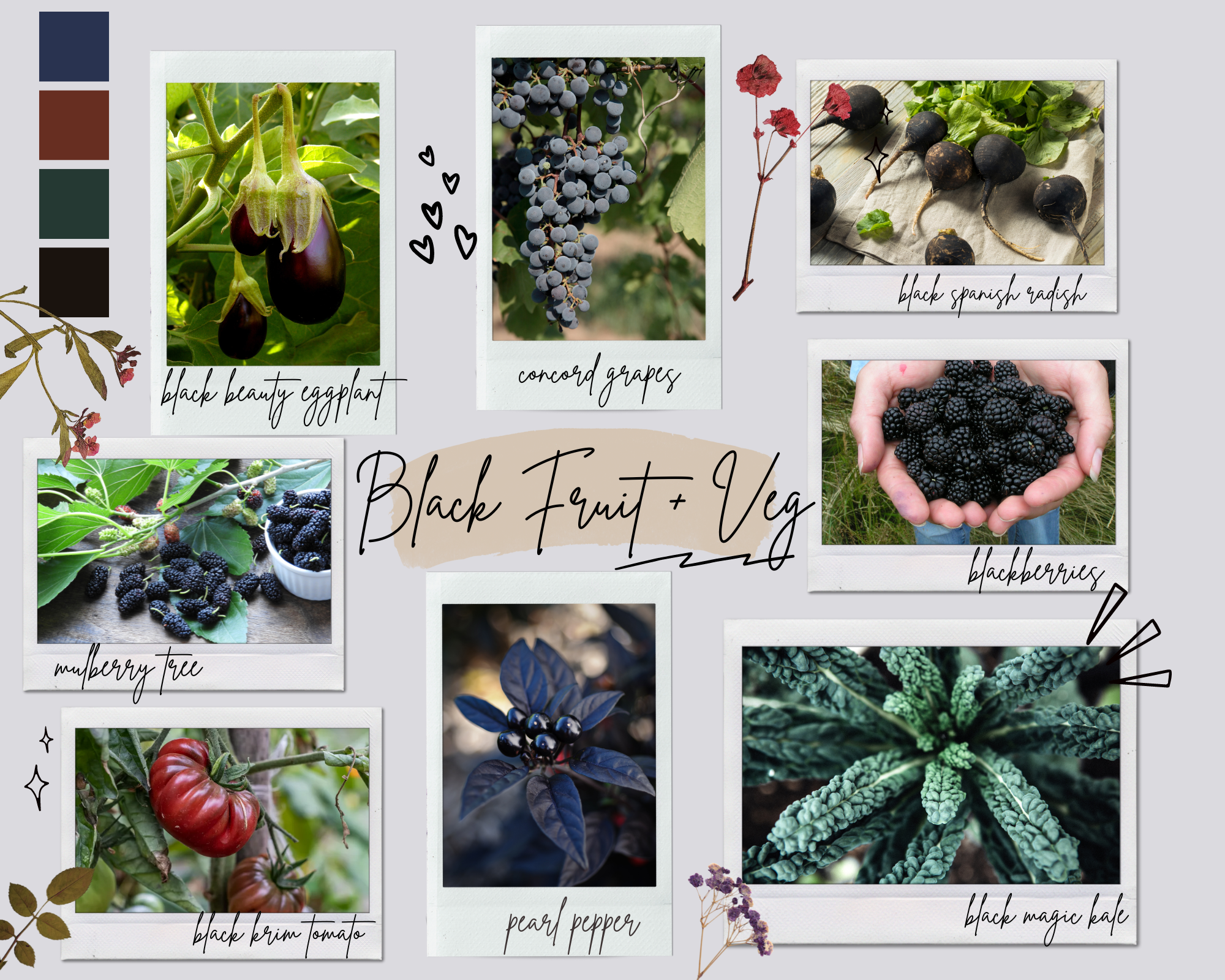
In the colorful canvas of our garden world, there’s always that one intriguing twist that grabs our attention in the seed aisle – black fruits and vegetables! My husband has a fascination with growing black plants and it’s through his enthusiasm that I am diving into the realm of these mysterious darlings. From their captivating appearance to their flavorful depths, black-hued edibles add a curious flair to any garden. They’re not just eye candy; they’re bursting with nutrients and antioxidants too!
Understanding Anthocyanins
 Anthocyanins are a fancy name for natural pigments found in plants that give them vibrant colors like red, purple or blue. Think of them as nature’s paintbrush, adding beautiful hues to flowers, fruits and even leaves. They’re like little packets of color that plants use for various purposes, such as attracting pollinators or protecting against UV radiation. So, when you see a bright red strawberry or a deep purple grape, you can thank anthocyanins for their eye-catching appearance.
Anthocyanins are a fancy name for natural pigments found in plants that give them vibrant colors like red, purple or blue. Think of them as nature’s paintbrush, adding beautiful hues to flowers, fruits and even leaves. They’re like little packets of color that plants use for various purposes, such as attracting pollinators or protecting against UV radiation. So, when you see a bright red strawberry or a deep purple grape, you can thank anthocyanins for their eye-catching appearance.
In addition to giving plants their beautiful colors, anthocyanins are also powerful antioxidants. Antioxidants are substances that help protect our cells from damage caused by harmful molecules called free radicals. Think of them as little bodyguards for your cells. When we eat foods rich in anthocyanins, like berries or dark-colored vegetables, these antioxidants can help support our overall health by reducing inflammation and lowering the risk of certain diseases, such as heart disease and cancer. (1) So, not only do anthocyanins make our food look vibrant but they also provide some great benefits for our bodies too.
Selecting Black Varieties
When choosing black vegetable and fruit varieties for your garden, consider factors such as climate suitability, soil conditions and available space. Here are some popular black cultivars that grow well in Southwest, Ontario:

Black Beauty Eggplant: Known for its glossy, deep purple-black skin, this variety thrives in warm climates with well-drained soil. When harvested at their peak, the skin is so tender that there is no need to peel them.
Black Krim Tomato: Originating from Russia, this heirloom tomato boasts dark purplish-black shoulders and offers a rich, smoky flavor profile. Many tomato fanatics claim that this is their favorite tomato of all time, including my Horticulture Hero, Mike McGrath.
Mulberries: Mulberries come in varying shades of dark purple to black when ripe and are bursting with sweet-tart flavor. They’re rich in antioxidants, vitamins and minerals, making them a delicious and nutritious addition to jams, pies and fresh fruit salads. HOT TIP: If you like to bicycle in the Summer, the Thames Valley Parkway is full of Mulberries! I see many locals foraging for Mulberries, especially in the “Banana Kingdom”. You can always check the official City of London Tree Map to find a Mulberry Tree close to you.
Black Magic Kale: With its dark, ruffled leaves, Black Magic Kale is not only visually striking but also packed with nutrients, thriving in cooler temperatures. New leaves will keep appearing “just like magic” throughout the growing season, providing you with a continuous harvest.
Black Grapes: Concord grapes have a deep purple-black skin and sweet-tart, juicy flesh. These grapes are versatile and can be enjoyed fresh, used in cooking or processed into juice, jams and jellies.
Blackberries: With its deep, rich hue and sweet-tart flavor, the blackberry is a beloved addition to any garden. These juicy berries are not only delicious fresh but also perfect for jams, pies and desserts.
Black Pearl Pepper: Characterized by its shiny, jet-black fruits, this ornamental pepper adds both aesthetic appeal and a spicy kick to dishes.
Black Spanish Radish: This heirloom radish variety features a striking black skin and crisp white flesh. With a pungent flavor profile, it adds a unique zest to salads and culinary dishes.
Cultivation Tips
Black varieties are as easy to grow as other fruits and vegetables. They often require full sunlight and well-draining soil enriched with organic matter to thrive. Regular watering, appropriate fertilization and monitoring for pests and diseases are essential for healthy growth and abundant yields.
Providing support for vining plants like Blackberries and Black Grapes can help optimize space and airflow. Caging tomatoes and eggplants is important to prevent stem breakage, keeping fruit off the ground and easier harvesting. Also, keep in mind that Blackberries and Black Grapes thrive in slightly acidic soils. Testing the soil pH is essential and you can make easy amendments to ensure optimal growing conditions for these fruits.
Harvesting at the right time and rotating crops annually are good practices to maintain soil health and prevent disease buildup. Always harvest black vegetables and fruits at their peak ripeness for the best flavor and nutritional content. Use sharp, clean tools to avoid damaging plants during harvest. Overall, growing black fruits and vegetables don’t really require any special techniques but they certainly offer a fun gardening and culinary experience.
Final Thoughts
Growing black fruits and vegetables in your garden is a such a fun and rewarding experience! Plus, it’s a sneaky way to pique my husband’s gardening interest. Understanding the role of anthocyanins, selecting suitable varieties and implementing proper cultivation techniques, you can enjoy a bountiful harvest of these intriguing crops. I hope this article left you feeling inspired and you’ll make this the year to try some of these mysterious, dark delights in your garden.
SOURCES
1) Kimble R, Keane KM, Lodge JK, Howatson G. Dietary intake of anthocyanins and risk of cardiovascular disease: a systematic review and meta-analysis of prospective cohort studies. Crit Rev Food Sci Nutr. (2019) 59:3032–43. doi: 10.1080/10408398.2018.1509835, PMID: [PubMed] [CrossRef] [Google Scholar]





About The Author: Darlene Davis
Darlene's gardening expertise encompasses a range of areas, including organic gardening practices, pollinator gardening and flower farming. She is an experienced flower farmer with a wealth of knowledge in Floriculture. Darlene is an alumna of the University of Guelph's Horticulture program, as well as the Gardener's Workshop and the Floret Workshop.
More posts by Darlene Davis